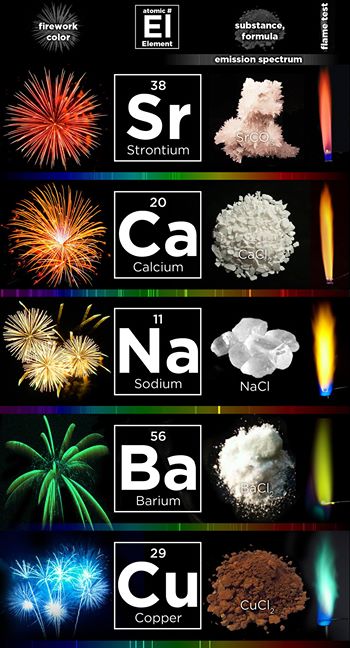

Fireworks are pretty cool. They’ve been pretty cool for thousands of years, ever sense they were invented in China around 200 BCE. Fireworks have always served as a way for us to celebrate and are commonly seen ushering in the new year and other holidays events. Today, America celebrates Independence Day so across that country fireworks will light up the sky. Today, we decided to talk about what actually makes a firework tick.
As John Conkling said, “Everything you see at a fireworks display is chemistry and action.” Fireworks are carefully crafted with the right chemicals so they light up the sky in an artistic way, instead of simply blowing up.
For a brief description of how you get the different colors and effects:
- Red is created by strontium salts and lithium carbonate.
- Green is made with barium.
- Yellow is created with the help of sodium nitrate.
- White is made with magnesium or aluminum.
- Blue is created with different copper compounds.
- Purple is made by mixing strontium and copper.
- Finally, the sparkling effect many fireworks have is made by titanium.

As an interesting side note, you cannot see fireworks from space, they simply aren’t bright enough (sorry ISS astronauts).
In the spirit of “if small is good then bigger is better” the Japanese set the world record for the single largest firework explosion in the world. Using a single firework that has a diameter of 1.2 meters (4 feet) and weighing 420 kilograms (926 pounds), the “Yonshakudama Shell” is probably one of the coolest fireworks I’ve ever seen.
